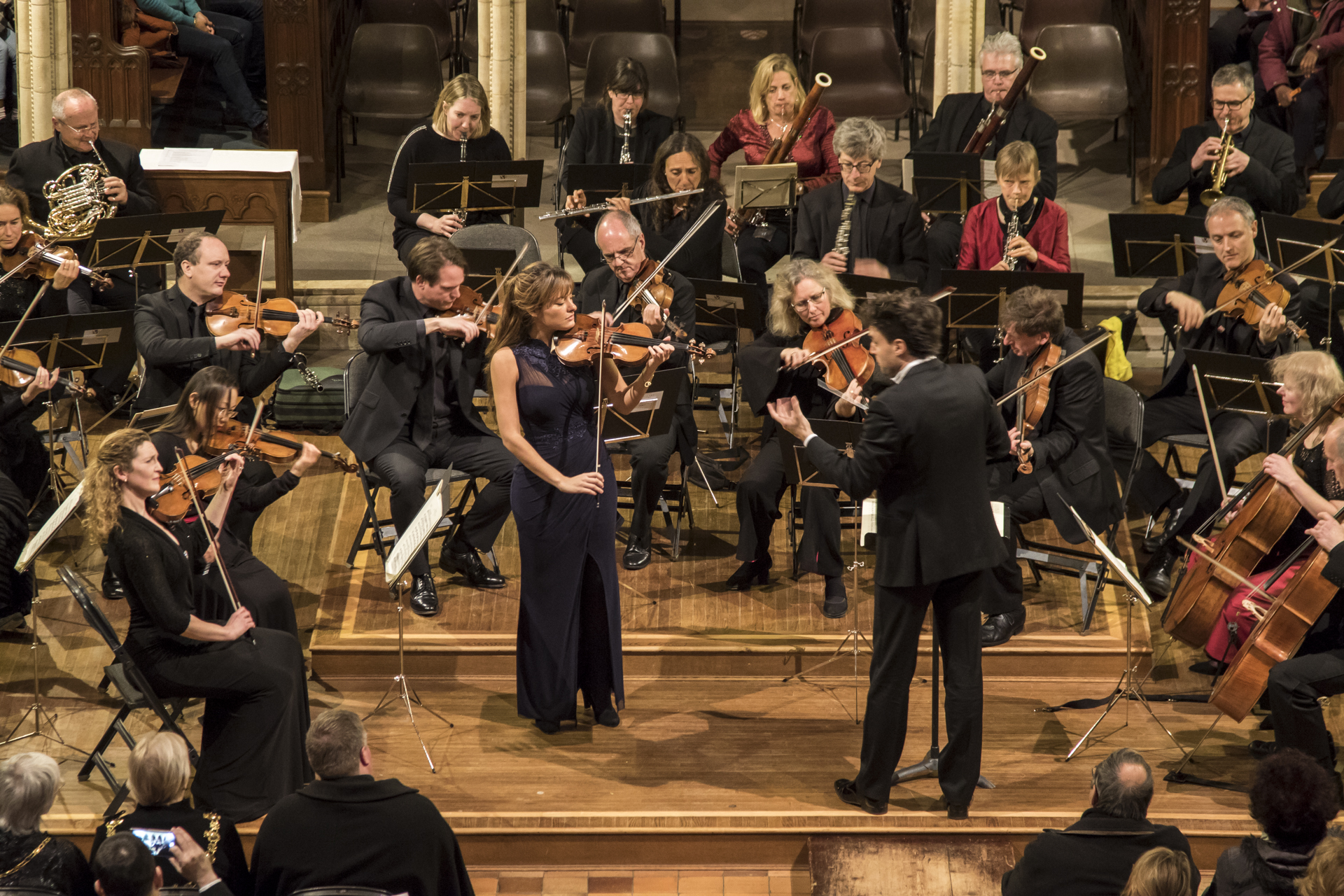 United Kingdom Beethoven, Brahms: Nicola Benedetti (violin), London Mozart Players / Leonard Elschenbroich (conductor), St. John’s Smith Square, London, 11.1.2018. (JPr)
United Kingdom Beethoven, Brahms: Nicola Benedetti (violin), London Mozart Players / Leonard Elschenbroich (conductor), St. John’s Smith Square, London, 11.1.2018. (JPr)

(c) Michal Porecki
Beethoven – Coriolan Overture Op.62
Brahms – Violin Concerto in D, Op.77; Symphony No.1 in C minor, Op.68
In a pre-concert speech the packed St. John’s Smith Square audience was reminded of the London Mozart Players’ distinguished near 70-year history, with the name of their founder the late Harry Blech – of blessed memory – being invoked. But this is now 2018 and we were told that this is the ‘new London Mozart Players’ and – like all similar chamber ensembles – it faces the challenge to survive in the current straitened financial climate. Their new Jubal app (to deliver the UK’s classical concert diary to iPhones) was strongly promoted, and I hope the ‘silver surfers’ in the audience – don’t worry I am firmly that age myself – will make use of it. Their challenge remains, of course, to fill venues for a standard overture-concerto-intermission-symphony concert such as this, without the photos of star violinist Nicola Benedetti on the publicity leaflets or throughout the glossy programme.
Beethoven’s Coriolan Overture (written for Heinrich Joseph von Collin’s 1804 tragedy Coriolan, about the same Roman general who inspired Shakespeare’s Coriolanus) has as its main C minor theme Coriolanus’s resolve and warrior-like tendencies (he is about to invade Rome), juxtaposing the more tender E-flat major of his mother pleading with him to desist. Coriolanus relents and since he cannot turn back kills himself. The overture contains threat, devotion and eventual resignation, and Leonard Elschenbroich – who has frequently been Benedetti’s chamber music partner – shaped its well-structured narrative appropriately to lead the accomplished LMP in a rewarding performance. It must be noted that – on the podium – Elschenbroich looks and conducts rather like a young Vladimir Jurowski, whilst intriguingly retaining some extravagant arm movements which are a reminder of the way he plays the cello.
Having Nicola Benedetti’s performance of the Brahms Violin Concerto before the interval – and not ending the concert – was brave as she left the packed St. John’s with her searing performance in all our minds throughout the second half. It was interesting to see how involved she was in the music even when she was not playing, even appearing to seem to add to Elschenbroich’s encouragement of this players with slight shrugs of her shoulders. Watching Benedetti close to, clearly her technique is so secure that it provides an always reliable base on which to develop her interpretations. As much as is possible – for a concerto which has such an emotionally broad palette – Benedetti made it look and sound easy, but, of course, it really is not.
Ever the alert accompanists, Elschenbroich and the understated LMP eloquently introduced the musical themes of the Allegro before Benedetti entered with a ferocious zeal creating a burnish tone with just a hint of grit. Neither the complexity of all this movement’s passage work nor its Joachim cadenza held any fears for her. The tone from Benedetti’s 1717 Stradivarius continued to shimmer on high and sizzle as the line sloped downward, and this gave an appropriately romantic expressivity to the Adagio. It had begun with Gareth Hulse’s sensitively delivered oboe solo and subsequently the violin seemed to flirt with LMP’s oboe, as well as, flutes and horn during this long, warm second movement.
The Allegro finale was certainly ‘giocoso’, and competition – in a good way – seemed to be firmly established between soloist and musicians. I was wondering if it was on the brink of being the ‘too lively’ that Brahms wanted discouraging. In the end it seemed just right as Benedetti’s playing continued to be a perfect blend of the playful and the blood-stirring. This concerto was dedicated to another great violinist but of a much earlier generation, Joachim, who gave its first performance in 1879. We hear his ‘voice’ most when his Hungarian heritage receives a tribute in the echoes of the Zigeuner style of this final movement. Benedetti authoritatively embraced all this movement’s rhythmic complexities and double stops and paid her own homage to her great predecessor with her gloriously rendered rondo which was suitably energetic and had more than a hint of that gypsy about it.
After that Brahms’s First Symphony which is an undoubtedly powerful – if slightly schizophrenic – experience, could only be somewhat of a let-down. Much has been written elsewhere of how it was published in 1877 after causing the composer much angst for fourteen years because Beethoven (who we hear allusions to in the finale) was a hard act to follow. This symphony contains a multitude of moods and to their credit Elschenbroich and the LMP treated them with equal care and commendable artistry. During a recent Barbican concert Sir Mark Elder (click here) suggested a Brahms symphony with a chamber orchestra might be considered by some as ‘foolhardy’ because audiences today are used to a ‘tapestry of sound’ from, he said, a ‘very large string body’ with woodwind which is often doubled. With the LMP, Elschenbroich – like Elder and the Britten Sinfonia – proved such a notion is far from ‘foolhardy’! The darkness to light (or night to day) drama inherent in the First Symphony was brought out like a musical rollercoaster ride with conductor and orchestra seemingly at one in a performance that had intellectual and emotional coherence from the sombre, austere opening to the grandly affirmative and hard-won conclusion to this work’s dramatic ‘journey’.
Jim Pritchard
For more about events at St. John’s Smith Square click here and about the LMP click here.
